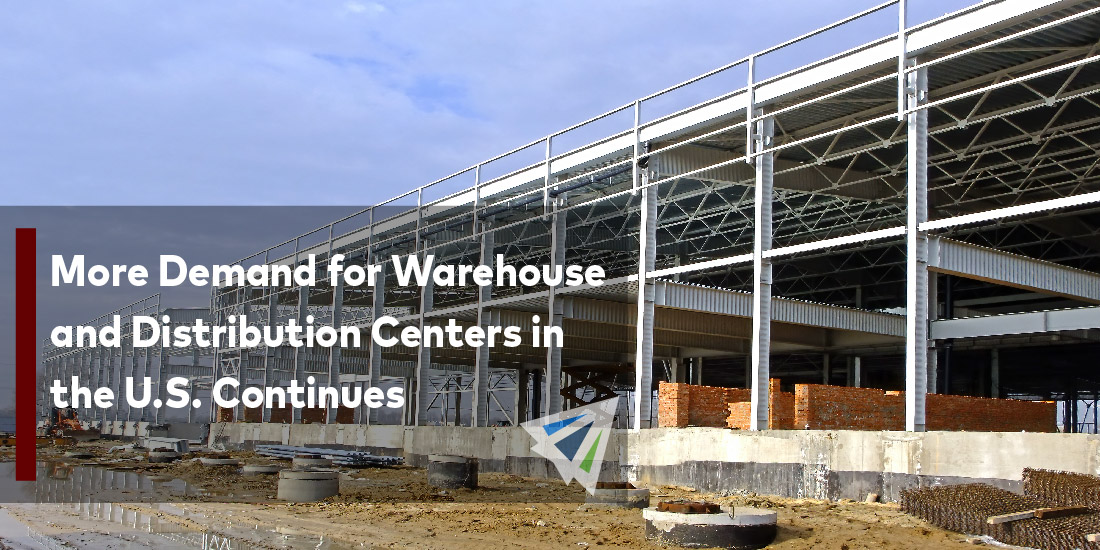The need for storage and distribution centers in the US is still on the rise despite the economic difficulties. Increased inventory levels and changing distribution needs within the logistics sector are what are driving this rise. This continued demand has recently been demonstrated by developments made by businesses like Lineage Logistics and Ryder System, both of which have expanded their warehousing capacities in key places to improve their services and handle increased freight volumes.
Developments in Warehousing of U.S. Products
For instance, Lineage Logistics, which gains from active cross-border trade with Mexico, recently unveiled a gigantic 343,250 square foot facility near Dallas, Texas. Lineage also purchased eight cold storage facilities from Burris Logistics, boosting its capacity by approximately 1.3 million square feet across several states.
In the meantime, Ryder System unveiled plans for a brand-new, 400,000-square-foot distribution facility in Aurora, Illinois, a suburb of Chicago. This building, which has been in service since August, completes their 2.4 million square foot multiclient storage site. Their primary area of expertise is on handling consumer packaged goods, including food, drinks, and household goods.
The success of these facilities is greatly influenced by their advantageous location. Senior Vice President of Consumer Packaged Goods at Ryder, Darin Cooprider, emphasizes the value of having several warehouses near by since it makes it easier to pool resources to respond to seasonal and market swings as well as to handle inventory overflow.
Ryder’s distribution network in the Greater Chicago area today includes 23 specialized customer warehouses, totaling approximately 17 million square feet of space, in addition to 11 multiclient warehouses. Other significant businesses are also expanding their footprint in Chicago, notably Amazon, which is preparing to build a 290,000-square-foot distribution center in the West Humboldt Park area.
The total demand for distribution space in the US is lower than it was in 2022, but vacancy rates are still low, putting pressure on rents and leasing costs. There is still a lot of inventory, especially among retailers. Texas and Midwest markets continue to be strong, in large part because of the region’s sparse investment and low vacancy rates.
Changes to Demand in Recent Years
During the pandemic, supply chain changes increased, causing a movement of freight from ports on the West Coast to those on the East and Gulf coastlines. As businesses try to adjust to shorter deadlines and meet client demands, this trend has led to a rise in the construction of industrial real estate in locations like Houston, Dallas, Atlanta, Savannah, Phoenix, Las Vegas, and Columbus, Ohio.
Shippers now need the freedom to decide on freight destinations at the last minute, which calls for more resources, including warehouses. The necessity of assets and real estate is emphasized by Kate Jostworth, Maersk’s Head of Strategy and Product Development/First-Mile.
The demand for warehousing and distribution facilities in Dallas is driven by the increase in inland volumes from the US-Mexico border and the Port of Houston. Dallas in particular is regarded by Lineage Logistics as an essential link in its global network of temperature-controlled storage and distribution facilities. Cross-docking, transloading, drop trailers, redistribution, and freight consolidation are just a few of the services the business provides.
In response to the expanding significance of the US-Mexico border in logistics, C.H. Robinson Worldwide developed a 400,000 square foot cross-dock facility in Laredo, Texas, further south. Cities are aggressively looking for real estate to accommodate the soaring demand for storage and distribution services as the border region picks up speed.
As a result of changing supply chain dynamics, increasing inventory levels, and the need to adjust to change consumer needs, the US warehousing and distribution business continues to develop and grow. To take advantage of the opportunities and difficulties presented by this constantly shifting environment, strategic locations, resource management, and increased real estate expenditures are crucial.
Should you have any questions regarding this and how it could impact your shipments, please reach out to our team today.
Additionally, we have our weekly market updates that can provide you with relevant freight news, updates, developments across the industry, and more.
